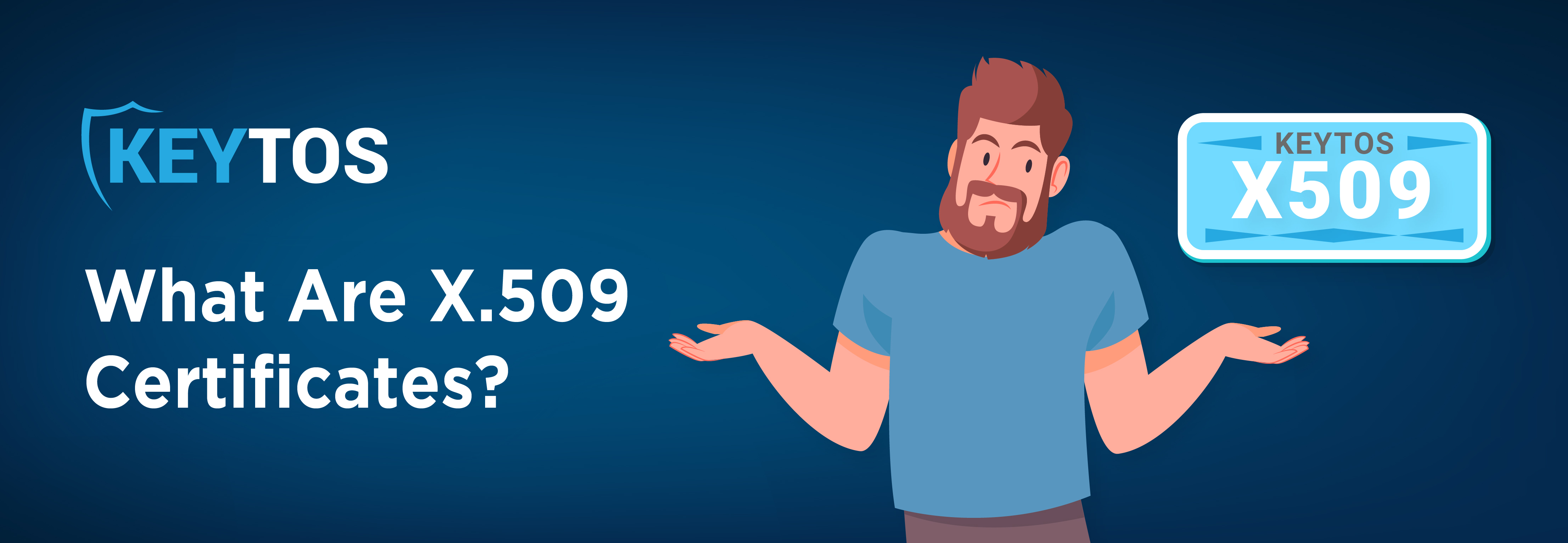
You’ve probably seen us mention X.509 certificates many times in different blogs and pages on our site, but what exactly are they? What makes a certificate an X.509 certificate? Is an X.509 certificate any different from an SSL certificate? This blog will run through all of that and more! Let’s jump in, shall we?
In all actuality, there is no difference between an X.509 certificate and an SSL certificate – whatever you want to call it, you should still follow general SSL certificate management best practices. An X.509 certificate is a digital certificate used primarily to verify the identity of the entity at the other end of a digital connection and to establish secure encrypted communications. The “X.509” is not actually a license plate number – it is a standard defined by the International Telecommunication Union (specifically, the ITU-T) for the format of public key certificates.
The ITU Telecommunication Standardization Sector (ITU-T) is one of the three sectors of the International Telecommunication Union (ITU), which is a specialized agency of the United Nations responsible for all matters related to information and communication technologies. The ITU-T, in particular, focuses on the standardization of telecommunications.
Standards defined by ITU-T, known as “Recommendations,” cover various aspects of telecommunication, including protocols, systems, and other related matters. These Recommendations are designed to ensure that global telecommunication networks and services interoperate smoothly and efficiently.
The “X.509” is one of these Recommendations. Specifically, it belongs to the “X” series, which focuses on data networks and open system communications. The X.509 Recommendation defines the format and the use of public key certificates, making it a foundational component in the realm of modern digital communication and cybersecurity. Introduced in 1988, X.509 specifically was designed to facilitate a Public Key Infrastructure (PKI).
X.509 defines:
The X.509 standard has evolved over time, leading to the development of various versions, with each update refining and extending its capabilities.
Every X509 certificate typically contains the following components:
Version: Indicates the version of the used X.509 standard.
Serial Number: Unique number assigned by the Certificate Authority (CA) to the certificate.
Algorithm ID: Describes the algorithm used by the CA to sign the certificate.
Issuer: The entity (usually a CA) that verified the information and issued the certificate.
Validity: A time period during which the certificate is considered valid, with both start and end dates/times.
Subject: Contains information about the certificate owner like organization name, country, state, etc.
Subject Public Key Info: Contains the public key and an identifier of the algorithm.
Extensions (Optional): Various functionalities such as specifying certificate usage (e.g., SSL/TLS, code signing), constraints, subject alternate names, or other properties.
Authentication: The primary purpose of an X.509 certificate is to ensure that the information you receive from the web server originates from the expected domain. It’s a form of authenticity assurance.
Privacy: Using the public key embedded in the server’s certificate, browsers can establish an encrypted connection to the server. This ensures that sensitive data like passwords, credit card numbers, and personal information remain private.
Data Integrity: Encrypted connections also mean that the data cannot be altered during transit without it being detected.
Trust: Certificates are issued by Certificate Authorities, which are organizations that verify the identity and legitimacy of the website or service. If a certificate is signed by a trusted CA, your browser will recognize it as valid. If not, you’ll receive a warning.
In simplified terms:
1) The certificate holder presents the certificate to the endpoint it wants to authenticate into (for example a web server showing its certificate to your browser).
2) The party verifying the authentication (in this case your browser) checks the certificate and:
(a) Verifies if it’s signed by a trusted CA.
(b) Checks if the certificate is still valid (by checking expiration date and CRL or OCSP).
(c) Matches the domain of the website to the certificate.
3) If everything checks out, your browser uses the server’s public key (from the certificate) to set up an encrypted connection.
1) SSL/TLS for websites: The “lock” icon in the address bar of your browser indicates that the site uses an X.509 certificate to establish secure connections.
2) Email: Certificates can be used for encrypting and digitally signing emails.
3) Code Signing: Developers can use certificates to prove that software/applications haven’t been tampered with since their release.
4) VPN and Networking: Establishing secure, encrypted communications between devices in a network.
5) Server to server passwordless authentication: Organizations that follow zero-trust best practices must move all server to server authentication to passwordless authentication. Moving to X.509 certificates meets this requirement as well as removes the need to manually rotate credentials.
6) Smartcard PIV Authentication: the first and most common unphishable passwordless authentication method for users.
X.509 certificates are an integral part of the internet’s security infrastructure. They act as a digital passport for servers, assuring users that they are communicating with a trusted entity and that their data is securely encrypted. As cyber threats continue to evolve, understanding and properly leveraging these certificates remains pivotal for online security. Ultimately, as long as you are following certificate management best practices, PKI doesn’t have to be hard! Schedule a FREE call with one of our PKI experts today to learn how X.509 certificates can help you go passwordless.